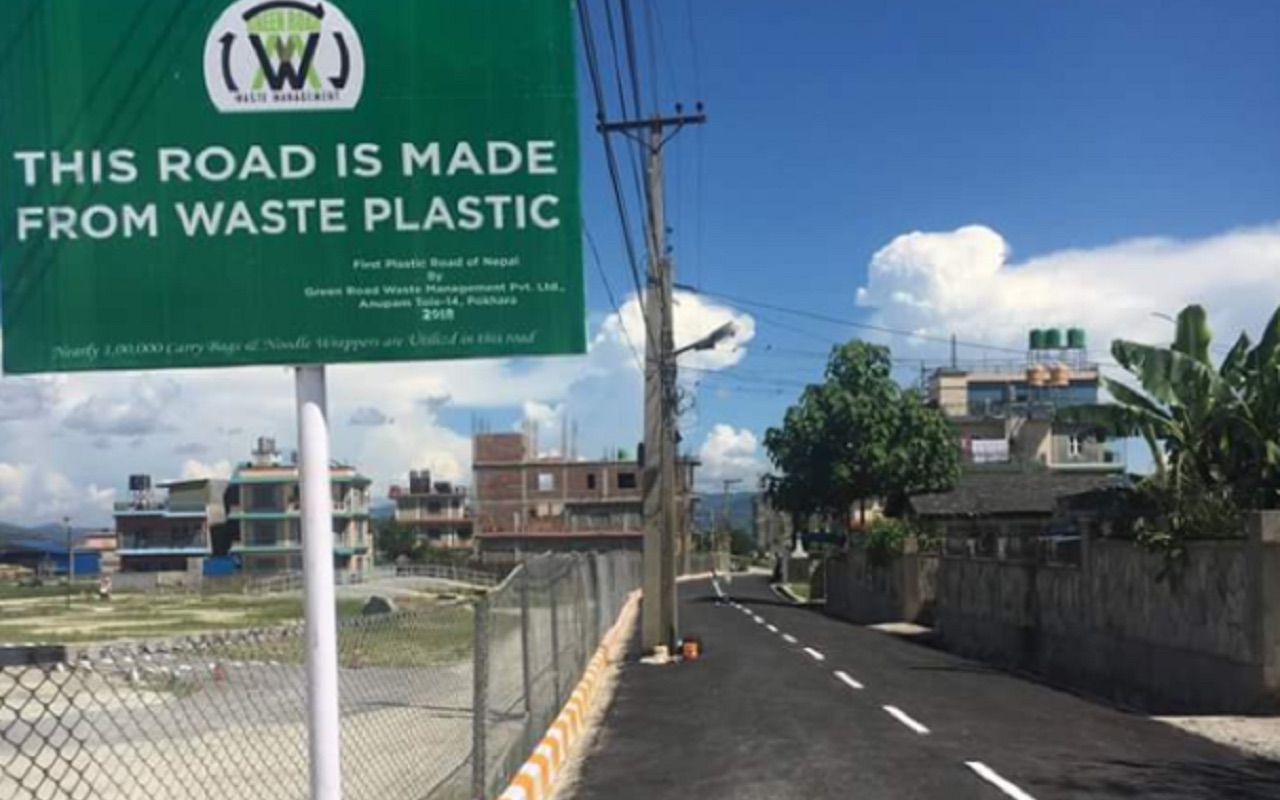
Transforming Plastic Waste into Road Pavement
A groundbreaking idea is emerging from Nepal, where a group of young entrepreneurs is turning plastic waste – often discarded in open landfills – into a new type of road construction material. According to the World Bank, Nepal’s urban areas generate approximately 5,000 tons of solid waste per day, with plastic accounting for 13% of that total. The issue extends far beyond Nepal: the Organisation for Economic Co-operation and Development (OECD) reports that globally, only 9% of plastic waste is recycled, 19% is incinerated, and nearly half ends up in controlled landfills. Without intervention, the production of synthetic polymers – the building blocks of plastic – is projected to reach 1.2 billion tons annually by 2060.
From Landfill to Pavement: Giving Plastic a New Life
“A plastic road can be built even with low-value plastic waste,” said Bimal Bastola, founder of Green Road Waste Management, the organization leading the initiative in Nepal. “We realized that these plastic materials could serve as raw materials, partially replacing bitumen in road construction.”
Nepal is not alone in exploring this innovation. In neighboring India, using plastic waste in road construction has been legally mandated since 2015, and similar initiatives are underway in Bhutan and Bangladesh.
Replacing Bitumen with Recycled Plastic
Traditional bitumen, a tar-based petroleum product, is mixed with heated aggregates before road paving. In contrast, the plastic road method coats aggregates with shredded plastic before adding bitumen. According to Bastola, this approach “reduces the need for virgin raw materials, lowers costs, prevents water infiltration, and increases road durability”. Some studies suggest that roads paved with plastic waste could last twice as long as conventional roads.
A Project in Its Early Stages
Currently, constructing one kilometer of road with this method requires about two tons of shredded plastic, according to the Nepalese company. However, the initiative remains in its infancy, with only 1.5 kilometers of plastic-paved roads completed so far. A pilot project is scheduled for Kathmandu in 2025, aiming to scale the concept.
Despite its promising potential, further research is needed to assess emissions during production, evaluate the release of microplastics over time, and determine the long-term performance of these roads once they reach the end of their lifecycle. “While pilot studies appear encouraging, additional research is essential,” noted Valerie Hickey, global director for climate change at the World Bank.